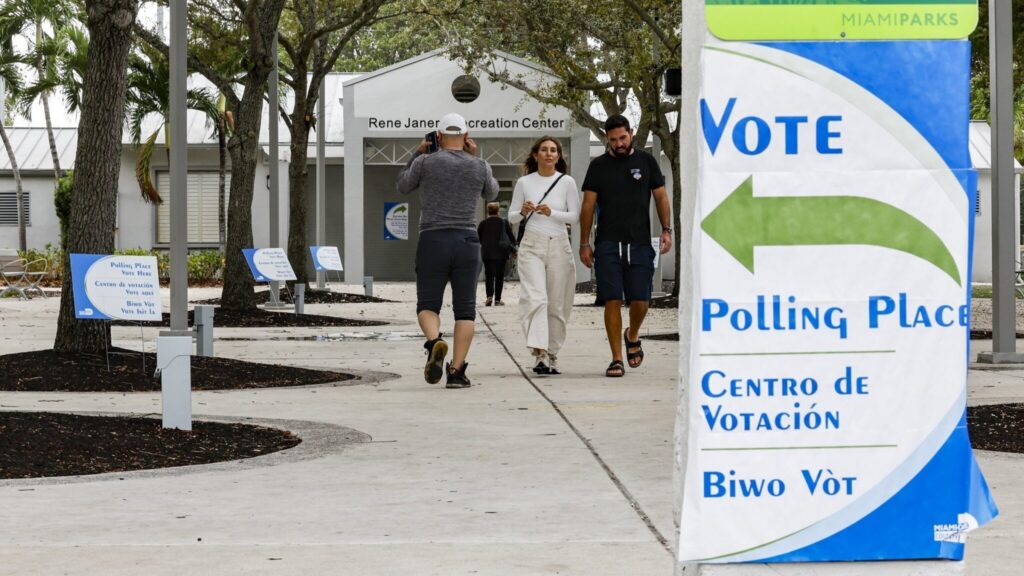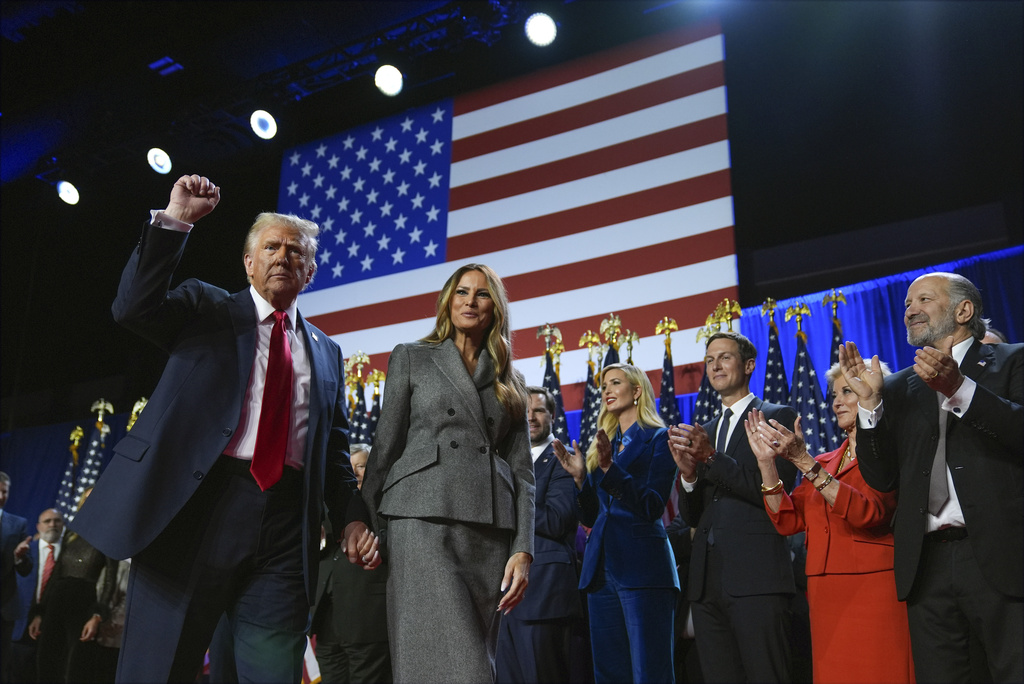Trump Latino voters/ Latino support for Trump/ Hispanic voters 2024/ Democrats Latino voters/ Latino political shift/ Newslooks/ MIAMI/ J. Mansour/ Morning Edition/ Donald Trump made notable gains with Latino voters across key U.S. regions in the recent election, securing wins in Hispanic-majority areas of Pennsylvania, Florida, and Texas. While Democrats focused on social issues and immigration, many Latino voters leaned toward Trump on economic concerns, signaling a shift that could reshape political dynamics in the coming years.

Trump’s Gains with Latino Voters Signal a Political Shift Quick Looks
- Trump’s success with Latino voters: Made inroads in key Hispanic regions, including Florida’s Miami-Dade and South Texas.
- Economic focus resonates: Latino voters prioritized concerns like the cost of living and housing over immigration issues.
- Democratic response: Democrats face challenges in reconnecting with Latino voters amid shifting priorities.
- Long-term impact: Increased Latino support could strengthen Republican chances in traditionally Democratic regions.
Trump’s Gains with Latino Voters Challenge Democratic Strategy
Deep Look
In the recent U.S. presidential election, Donald Trump achieved significant gains among Latino voters across key battleground states, a trend that could reshape the political landscape for years to come. From Pennsylvania to Florida and Texas, Latino-majority communities backed Trump over Kamala Harris, breaking traditional party loyalties and signaling shifting priorities within the Latino electorate.
Latino Support for Trump Across Key Regions
Trump’s popularity surged in Hispanic-dense areas in Pennsylvania, where he captured counties with significant Puerto Rican populations. Trump also flipped Florida’s Miami-Dade County, traditionally a Democratic stronghold, and gained a strong following along the state’s Interstate 4 corridor, home to diverse Latino communities of Cuban, Venezuelan, Puerto Rican, and Colombian descent. Similarly, in Texas’ Rio Grande Valley, an area historically loyal to Democrats, Trump made unprecedented inroads among Mexican-American voters, securing majorities in counties along the Texas-Mexico border.
This realignment marks a shift that, if sustained, could challenge Democratic dominance in regions like Pennsylvania, Michigan, and Wisconsin while strengthening the Republican base in the Southwest.
Economic Concerns Outweigh Immigration Issues
While immigration has traditionally been a central concern for many Latino voters, economic issues dominated the minds of Hispanic voters this election cycle. According to AP VoteCast, roughly 7 in 10 Latino voters were “very concerned” about food costs, and nearly two-thirds cited housing expenses as a major concern—rates higher than those of the general population. Trump garnered strong support among Latinos concerned about the economy, with half of them believing he would better handle economic challenges, compared to 4 in 10 for Harris.
Marcela Diaz-Myers, a Colombian-American leading a Hispanic outreach team for Pennsylvania’s Republican Party, stated, “When they looked at both candidates, they saw who could improve our economy and the quality of life. Many who voted for Trump were able to look past his controversial remarks and instead focused on his economic track record.”
Democrats’ Messaging Struggles
In contrast, Harris and the Democratic Party highlighted Trump’s past stances on immigration and his delays in providing relief aid to Puerto Rico after Hurricane Maria. She also focused on remarks from a Trump rally in New York, where a comedian joked about Puerto Rico being a “floating island of garbage.” Harris sought support from Latino celebrities like Bad Bunny and Jennifer Lopez to draw attention to racism and social justice issues. Despite these efforts, Trump gained ground even in Pennsylvania counties with high concentrations of Puerto Rican voters, such as Berks and Luzerne.
In Florida, Trump won the state by a larger margin than in 2020, flipping several central Florida counties with significant Venezuelan populations. Miami-Dade County, where Trump lost by seven percentage points in 2020, shifted decisively, with Trump winning by 11 points this time, thanks in part to support from Cuban-American voters and other anti-socialist immigrant communities.
Cultural and Social Values Resonate with Latino Voters
Trump’s anti-“woke” messaging and emphasis on conservative values, particularly on issues like transgender rights, resonated strongly among some Latino voters, especially in deeply religious and traditional communities. Kevin Marino Cabrera, a Miami-Dade County commissioner and former Trump campaign state director, observed that many Hispanic voters oppose “woke ideology,” which Trump made a focal point of his campaign.
In South Texas, Democratic operative Abel Prado noted that national Democrats’ focus on issues like reproductive and transgender rights alienated many Latino voters. “This nonsense about your son going to school and coming back as a girl—it struck a chord with many here,” Prado said, pointing to the Republican Party’s success in addressing cultural concerns.
A Defiant Vote and the Appeal of the American Dream
Prado also pointed out that many Latinos who supported Trump were inspired by his appeal to the American dream narrative of self-made success. Despite his privileged background, Trump’s business persona attracted Latinos who value hard work and resilience.
Shifts in Perceptions Around Immigration
While immigration policy continues to be relevant to Latinos, Daniel Alegre, CEO of TelevisaUnivision, observed that recent Latino voters were more concerned with economic and quality-of-life issues. He noted a growing resentment among some Latino communities toward new immigrants receiving government services that they themselves had to work hard to access, which the Trump campaign skillfully tapped into.
Alegre also noted that Trump’s success with Latinos this election reflected a shift away from party affiliation toward issue-based voting. “The most important thing either party can do is keep their ears to the ground and stay connected to the community,” Alegre said, highlighting the Republican campaign’s effectiveness in staying in touch with Latino concerns.
Democrats Face a Strategic Challenge
This shift in Latino support presents Democrats with the challenge of reconnecting with a critical voting bloc whose interests appear increasingly focused on the economy and cultural values. Many Democrats are now questioning whether their strategy needs a complete overhaul to meet the evolving priorities of Latino voters.
As Trump prepares to take office, his success with Latino voters signals a potential long-term realignment that could disrupt traditional party loyalties and redefine the political landscape. With Latinos representing one of the fastest-growing segments of the U.S. electorate, both parties will need to adjust their strategies to connect with these voters meaningfully.







